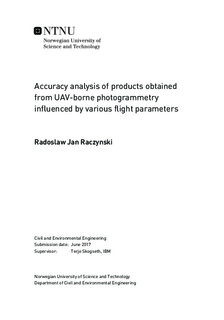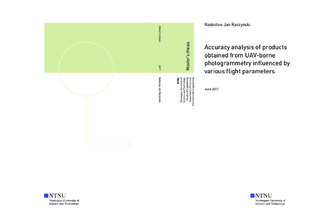| dc.description.abstract | Rapidly developing technology Unmanned Aerial Vehicle based photogrammetry is used in an increasing number of applications. They are employed in volume calculations, terrain mapping or generating 3D models of buildings. Conducting a successful mission with desired accuracy requires knowledge of influence of various flight settings.
The main purpose of this thesis is to assess accuracy that can be acquired with low-cost, commercially available UAV. It is influenced by flight parameters, such as height, forward and side overlap of images and speed of the aircraft. Additionally, various configurations of number and distribution of Ground Control Points are tested. The acquired accuracy is discussed with time and effort spent on the mission. The final result is always a compromise between economy and quality.
The second objective of the thesis is to compare 3D point cloud datasets acquired from laser scanning and UAV photogrammetry. The most optimal parameters of flight are used to perform a mission. Data is processed in two Structure from Motion software packages and compared to reference dataset. Results show that to some extent UAV-borne measurements can compete with Terrestrial Laser Scanning. | |

